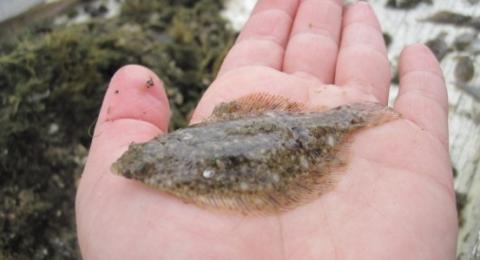
Winter flounder, a commercially and recreationally important groundfish species, is predominantly found in US coastal waters from Maine to New Jersey and offshore in the Gulf of Maine on Georges Bank. The coastal populations have declined dramatically and there are indications that this is due to many factors including changes in the ecosystem, especially to estuaries which are Essential Fish Habitat for juvenile winter flounder. If fewer estuaries are yielding winter flounder recruits, habitat alternations and/or (incidental) fishing pressure to those few but productive estuaries could have an unintended and enormous negative impact to adult populations. Therefore, it is critical to determine which estuaries are most productive so that they can be protected better and so the key ingredients for successful winter flounder recruitment in this changing ecosystem can be identified.
To understand these ecological relationships better, the chemical composition of winter flounder otoliths (CaCO3 structures) from populations ranging from New Jersey through New Hampshire are analyzed to determine how they differ spatially and temporally, and which natal estuaries contribute the greatest number of recruits to offshore adult populations. Results show that elemental signatures of age 0 winter flounder differ spatially between estuaries along a latitudinal gradient. The addition of the isotopes δ18O and δ13C greatly increase the classification accuracy of winter flounder juveniles to their natal estuaries when used with microchemical analyses. This technique is recommended for otolith signature analyses. However, due to interannual variation in some elements at some estuaries, classification accuracy decreases at finer spatial scales (compared to analyzing individual cohorts) when winter flounder samples from different years are combined. Classification accuracy remains robust when these multi-year samples are assigned to larger geographical regions (stocks). Research continues to determine if adult fish can be assigned to a natal nursery based on their otolith elemental signatures.
Funding has been provided by the NOAA Saltonstall-Kennedy Program and NH Sea Grant.
